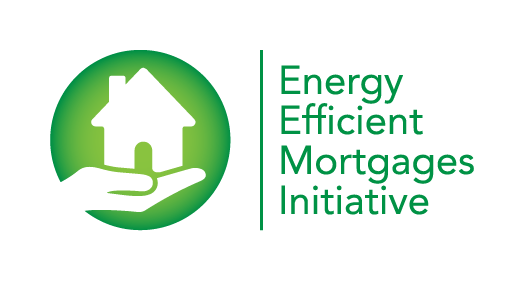

By Ursula Hartenberger, RICS Global Head of Sustainability
The recently published EeMAP definition for energy efficient mortgages presents a breakthrough in the project and provides the basis for establishing protocols to ensure appropriate lending secured against properties which are likely to both lower credit risk and support the climate change mitigation agenda. The definition explicitly mentions the value aspect of the energy efficiency measures of the property for which an Energy Efficient Mortgage (EEM) is being sought and as such clearly refers to the EeMAP valuation and energy efficiency checklist, developed by RICS to aid transparency to the valuation process.
What is the checklist and how does it sit with the traditional canon of mortgage lending valuation instructions?
The EeMAP valuation checklist is the result of an in-depth consultation with valuers and mortgage lending banks from across Europe and is designed to complement existing instructions given to valuers. Currently there is no standard reporting template for valuers asking them for their assessment of the relationship between value and the energy efficiency aspects of the property although much of this information may already be collected and used implicitly to inform the valuer’s opinion of market value. The checklist provides a list of property characteristics which may affect the energy demands of the building – such as heating, insulation, structure and orientation to name but a few and requires the valuer to report on each explicitly using a tick box and comment facility. Many of the indicators on the list will look familiar to valuers and banks as they are already part of existing valuation instructions – the difference is that they will be assessed specifically from an energy efficiency perspective.
Therefore, if the instruction allows, valuers are advised to consider and make specific reference to those indicators and observed subsequent energy efficiency characteristics and implications which potentially could impact the value of the property and, indeed, consider this relationship in their final estimate of the subject properties market and mortgage lending value.
What implications does the EeMAP checklist have for lending institutions?
Depending on the lending context and/or the property-specific information already available or recorded, lending institutions may wish to complement their existing valuation instructions with selected indicators from the checklist, or indeed use it in its entirety.
In addition, banks are advised to capture important information on the indicators contained in the checklist as this is essential for measuring the financial performance of energy efficient mortgages and for benchmarking them in relation to key risk indicators such as Probability of Default (PD) or Loss Given Default (LGD). Additionally, by collecting and recording this data, it will better inform the valuers of the energy/value relationship. This could be important for EU policy moving forward.
What is the scope of the new EeMAP checklist?
The checklist is intended to serve different lending scenarios, including:
– the origination of a new or extension of an existing mortgage for a property undergoing renovation,
– the origination of a new mortgage for an already energy efficient property, and
– re-mortgaging.
The checklist has been created with user-friendliness in mind. It comprises three assessment categories:
- the core indicators, such as the EPC rating, energy consumption, physical building characteristics, condition of systems, availability of building related information/documentation, etc.,
- commentary regarding additional energy-performance related risk considerations, including building orientation, presence of renewables, lighting, etc., and finally,
- an assessment summary that also benchmarks the property in question against overall market expectations with regard to energy efficiency.
Valuers are asked to rank each indicator according to a RAG (Red, Amber, Green) rating with a supplementary comment column in which they should provide a brief rationale for their respective ‘RAG’ judgement where this is not obvious.
Red: Below market ‘norm’ – value actually/potentially at risk over period of proposed loan
Amber: On or near market expectations – may be at risk in medium term
Green: Above market expectations and therefore likely to present a lower value risk moving forward.
Grey: No data available
Are valuers in Europe ready for the new EeMAP energy efficiency valuation checklist?
The EeMAP consortium is fully aware that widespread market uptake of the EeMAP valuation checklist will depend on valuers feeling comfortable with making a professional judgement on the potential value impact of energy efficiency characteristics of a property. The consortium is also conscious of the fact that not all valuers in Europe undertaking valuations for mortgage lending purposes may currently have the necessary knowledge to assess some of the technologies that impact on energy efficiency and performance in order to appropriately complete and rate all indicators and assess their potential to impact value.
Therefore, the EeMAP consortium is now working on additional reporting guidelines to support the practical application of the checklist by providing explanatory notes on each of the checklist’s core indicators as well as the items under the commentary section and the overall assessment summary.
On the basis of these explanatory guiding notes, a tailor-made set of EeMAP energy efficient mortgage valuation training slides will be developed and integrated into existing valuation and energy efficiency training material, developed as part of the Intelligent Energy Europe funded project RenoValue. The combined training package will cover the following: the rationale and business case for integrating a building’s energy efficiency features as part of the valuation process, an introduction to energy efficiency in buildings, sources of information on energy performance, the integration of energy efficiency considerations into valuation methodology and valuing energy performance as part of valuations for mortgage lending purposes.
The joint EeMAP / RenoValue training material will be free and can be used either inhouse by lenders or in those cases where valuations are outsourced by firms contracted to carry out valuations on behalf of the bank.
Sitemap
Copyright © Energy Efficient Mortgages Initiative


The project DeliverEEM has received funding from the European Union’s LIFE 2023 programme under grant agreement No.101167431. The EeMAP, EeDaPP, EeMMIP projects have received funding from the European Union’s Horizon 2020 research and innovation programme under grant agreements No. 746205, No. 784979 and No. 894117 respectively
Privacy Overview
| Cookie | Duration | Description |
|---|---|---|
| cookielawinfo-checkbox-analytics | 11 months | This cookie is set by GDPR Cookie Consent plugin. The cookie is used to store the user consent for the cookies in the category "Analytics". |
| cookielawinfo-checkbox-functional | 11 months | The cookie is set by GDPR cookie consent to record the user consent for the cookies in the category "Functional". |
| cookielawinfo-checkbox-necessary | 11 months | This cookie is set by GDPR Cookie Consent plugin. The cookies is used to store the user consent for the cookies in the category "Necessary". |
| cookielawinfo-checkbox-others | 11 months | This cookie is set by GDPR Cookie Consent plugin. The cookie is used to store the user consent for the cookies in the category "Other. |
| cookielawinfo-checkbox-performance | 11 months | This cookie is set by GDPR Cookie Consent plugin. The cookie is used to store the user consent for the cookies in the category "Performance". |
| viewed_cookie_policy | 11 months | The cookie is set by the GDPR Cookie Consent plugin and is used to store whether or not user has consented to the use of cookies. It does not store any personal data. |

